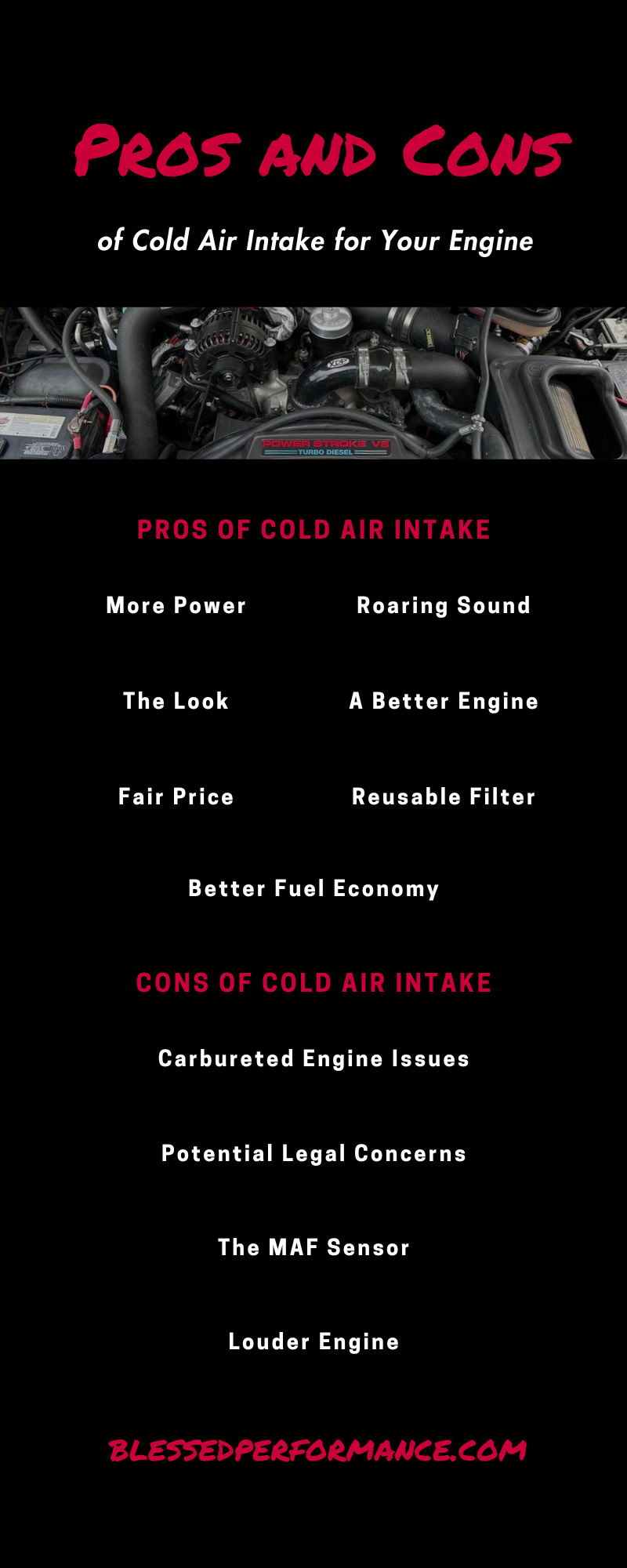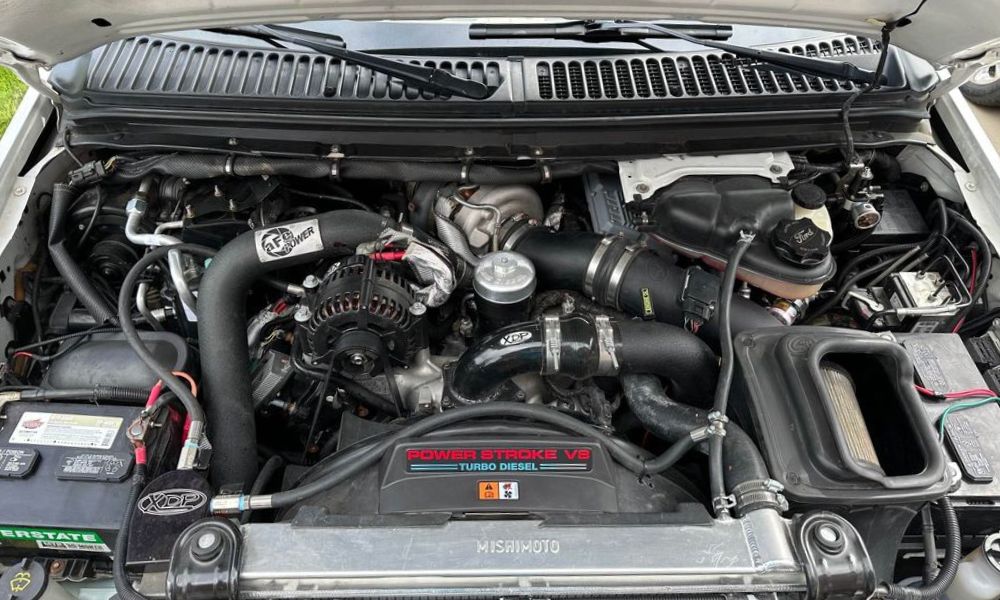Pros and Cons of Cold Air Intake for Your Engine
18th Sep 2023
Whether for faster speed, better sound, or better gas mileage, auto upgrades have long been a popular subject. A cold air intake is one of the most common modifications for a vehicle. However, despite its many benefits, a cold air intake system has a few drawbacks. Below, we’ll detail the pros and cons of cold air intake for your engine and let you decide if it’s up your alley.
The Purpose of Cold Air Intake
Before you learn about the advantages and disadvantages of having a cold air intake for your engine, you should know what it is and does. A cold air intake comprises a cone-shaped air filter, metal tubing, and heat protection.
The filter is usually foam instead of the traditional paper filter. Foam filters lead to increased ventilation, allowing the engine control unit (ECU) to respond positively because increased airflow from the fuel injection results in increased output.
A cold air intake system replaces the rubber of an OEM air intake with metal piping to reduce air resistance. Because of this, the engine can draw more air into its cylinders. The upgrade from rubber to metal is mostly due to the fact that metal is superior to rubber in heat dissipation.
Lastly, a cold air intake system has a heat shield that protects the air filter and seals against the hood. This part steers clear of the rest of the engine bay to prevent excessive heat from entering the air filter.
In a nutshell, a cold air intake chills the air before it enters the engine. That cool air becomes dense, resulting in a louder, more robust bang because of it.
Pros of Cold Air Intake
Reviewing the pros of having a cold air intake can help you decide whether this addition is right for you and your vehicle.
More Power
Cold air intake improves the system’s flow, giving the engine a better path to draw in air, leading to a better output. However, decreased intake temperatures are the primary reason for the increased horsepower. Because the cold air intake chills the air before it enters the engine, the volume of air available to the engine increases.
The ECU should then automatically provide additional fuel to complement the increased airflow, resulting in increased power. Results may differ depending on various factors, but one can expect a 10–30 percent horsepower boost after installing a cold air intake system.
Roaring Sound
More brute power leads to a better-sounding engine. Despite popular belief, you can obtain great sound without spending a thousand dollars on an exhaust system. A cold air intake will enhance the engine sound when you put the pedal to the metal. However, it’s still relatively quiet when you take it easy.
Better Fuel Economy
Any upgrade that can lead to better fuel economy is a welcome addition. Fortunately, a cold air intake aids in that effort because the engine doesn’t have to work as hard to draw in fuel and air.
Reusable Filter
Reusable cotton gauze air filters are standard on all premium cold air intakes. That saves you the cost of annual replacements by allowing you to clean and reuse them. The method is simple: wash it, wait a few minutes, and then spray it with oil. If you take care of your filter, it will last for years.
The Look
When thinking of ways to improve the appearance of your vehicle, you probably don’t consider what’s under the hood. However, installing a cold air intake will likely make the engine compartment one of your vehicle’s most attractive parts. It will surprise you how much better chrome looks compared with plastic parts.
Fair Price
A cold air intake is about half of the cost of what a new exhaust system would cost. While it’s still an investment of hundreds of dollars, you’ll walk away with heavier pockets than you would after installing an exhaust system.
A Better Engine
All these pros lead to a better engine. Since the engine generates excessive heat without a proper air intake system, its performance suffers as it warms up. In addition, the internal components suffer additional wear at higher temperatures of operation. Therefore, the engine will function better with cooler air, motor oil, and fuel.
Cons
It’s not all sunshine and rainbows after installing a cold air intake, as these disadvantages will show you. Consider these carefully to gauge if this upgrade is truly best for your vehicle.
Carbureted Engine Issues
Since the cold air intake system allows more air into the engine, the ECU must adjust the fuel output accordingly. Unfortunately, carbureted vehicles lack an ECU or other means of making such adjustments while driving. This can be problematic on chilly winter mornings, as the cold, bitter air will hamper your engine.
The MAF Sensor
Your car’s fuel injection system cannot function without the mass airflow sensor (MAF). This sensor measures the intake air temperature, which you can find between the air filter and intake manifold.
But this small wire in the center of the air intake is in the line of fire. Therefore, it’s common for oil to seep in and contaminate this area, tripping the sensor. Wiping this area clean if the sensor malfunctions should fix the problem.
Also, the check engine light might appear because of a faulty MAF sensor. It could also imply the cold air intake is running so well that the vehicle’s fuel system cannot keep up with the new addition.
Louder Engine
While the louder engine is a pro for many people, you might despise it. If being stealthy and quiet is your main goal, a cold air intake shouldn’t be in the cards.
Potential Legal Concerns
State laws on cold air intake systems differ between the 50 states, and it may be illegal in yours. Be sure to check out your state’s laws before investing in a cold air intake system, or else you’ll have to sell it as quickly as you bought it.
The Risk of Low Quality
You should exercise extreme caution and avoid unnecessary shortcuts while shopping for cold air intake. Your goal may be to stay within your budget by purchasing a model-specific kit for under $100 or a universal kit for even less. However, installing an inferior cold air intake would likely reduce your car’s horsepower and worsen its gas mileage.
If you value the pros of a cold air intake for your engine more than you fear the cons, shop at Blessed Performance to find the best 2003 6.0 Powerstroke upgrades. Whether it’s a cold air intake or something else, our parts can take your Ford to the next level!


